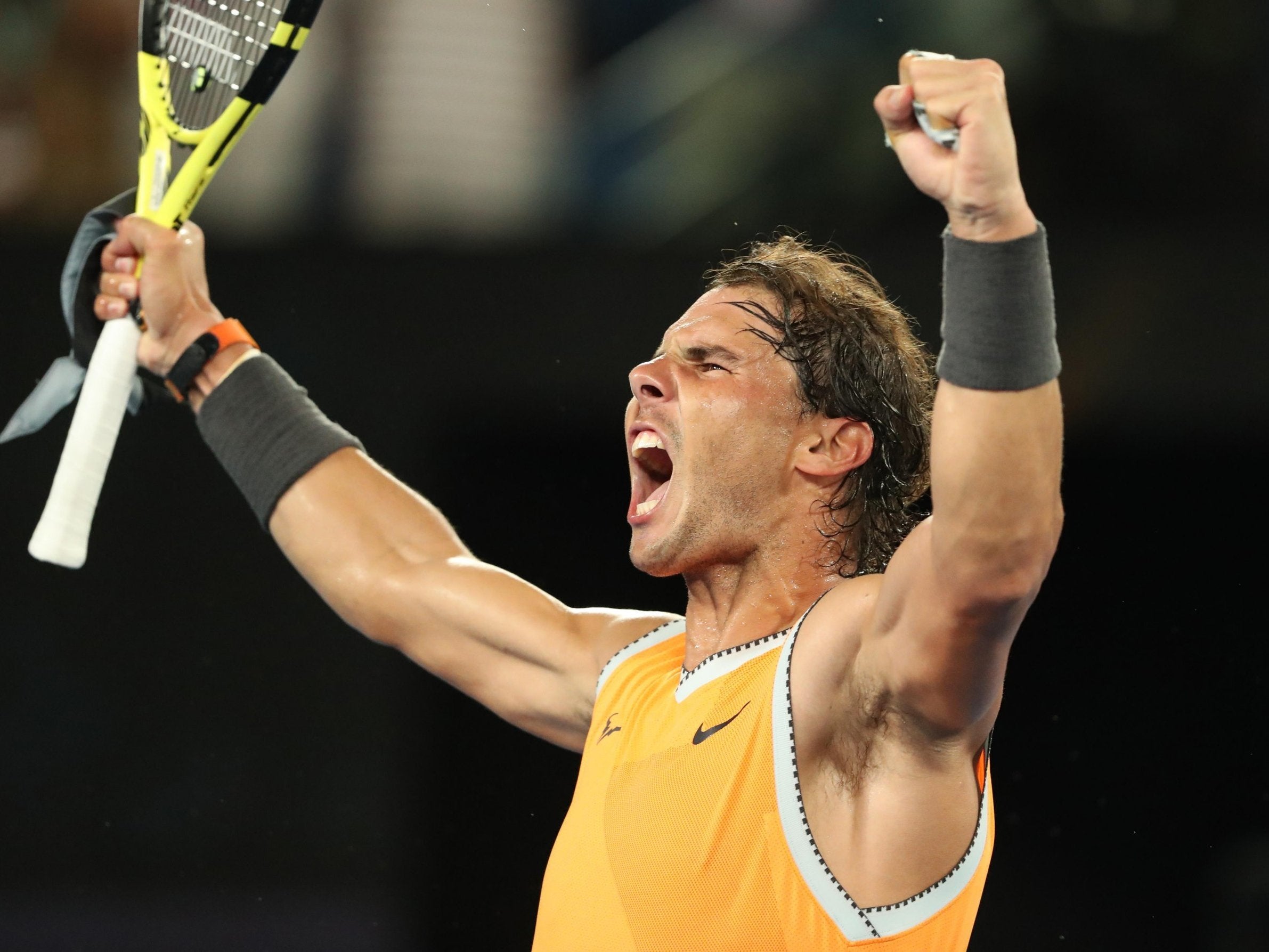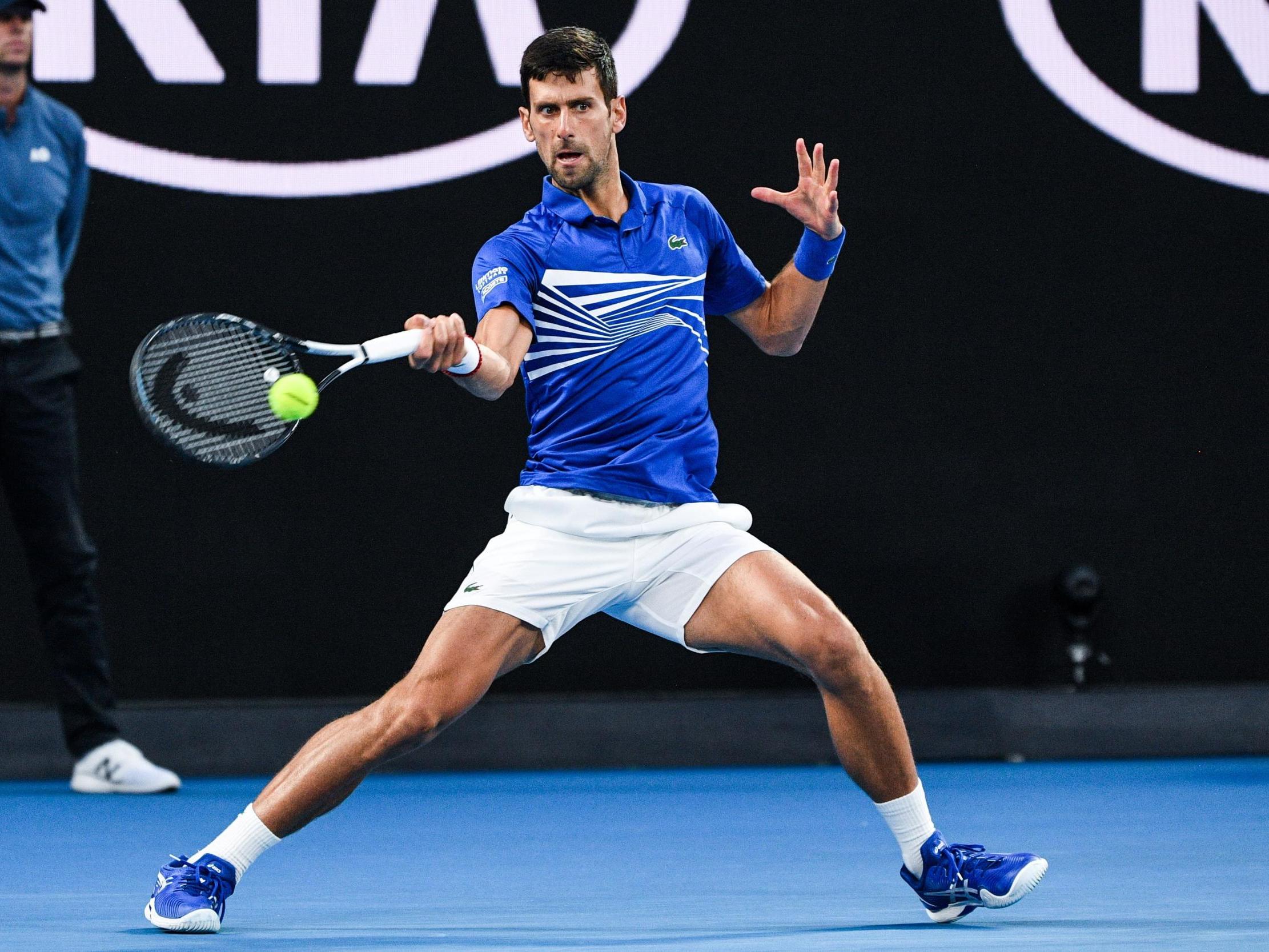Rafael Nadal vs Novak Djokovic: A great rivalry that shows no sign of fading anytime soon
Djokovic leads the head-to-head record with Nadal by 27 wins to 25. At this rate, there are plenty more matches between the two rivals to come

Your support helps us to tell the story
From reproductive rights to climate change to Big Tech, The Independent is on the ground when the story is developing. Whether it's investigating the financials of Elon Musk's pro-Trump PAC or producing our latest documentary, 'The A Word', which shines a light on the American women fighting for reproductive rights, we know how important it is to parse out the facts from the messaging.
At such a critical moment in US history, we need reporters on the ground. Your donation allows us to keep sending journalists to speak to both sides of the story.
The Independent is trusted by Americans across the entire political spectrum. And unlike many other quality news outlets, we choose not to lock Americans out of our reporting and analysis with paywalls. We believe quality journalism should be available to everyone, paid for by those who can afford it.
Your support makes all the difference.Whoever wins the Australian Open final between Rafael Nadal and Novak Djokovic here on Sunday, you can be sure that they will be asked the same question many times in the weeks and months to come: is Roger Federer’s all-time record of 20 men’s Grand Slam singles titles in their sights?
It will be a natural enough question to ask given that Nadal has already won 17 and Djokovic 14, but you will not find either player keen to weigh up the options. Nadal in particular always denies being interested in chasing down such targets.
“When I finish my career, we’ll see where I am, where Roger is, where Novak is,” the 32-year-old Spaniard said here on Saturday after a practice session.
“My goal is always the same: just to be happy in what I am doing. At this moment I am more than happy and satisfied with everything in my career. My real goal is just try to keep doing the things that I am doing as long as possible, to give myself chances to compete at the highest level. If I’m able to make that happen, maybe I will keep having chances to win.”
Nadal and Djokovic, who is 31, are both at an age where many top players in the past had either retired or were past their prime. Bjorn Borg, John McEnroe and Mats Wilander, for example, won 29 Grand Slam titles between them in the 1970s and 1980s, but none after the age of 25.
Improvements in training methods, recovery procedures, nutrition and sports science are helping today’s players to compete for longer, while Nadal has been adapting his game to his advancing years. The Spaniard’s natural court position is still behind the baseline, but he is not the relentless grinder that he was, wearing opponents down by making them hit the extra ball.
Carlos Moya, who took over from Nadal’s uncle as his coach last year, has helped him develop a more attacking game. Nadal takes more risks than he used to and goes for more aggressive shots. The search for improvement is never-ending: he remodelled his service action over the winter and his serve is now more potent, which gives him more opportunities to attack with his follow-up shot.
“Of course, I am not doing serve-and-volley,” Nadal said. “I am not hitting winners every ball. But I play all the shots with a goal. There is no better way to be aggressive than to hit every shot with the aim of hurting your opponent. That has been my goal during all my career.
“Today I can do that damage a little bit earlier than before because during this event I have been serving great. When you serve great, then the first ball normally is a little bit easier.
“I can’t play like Roger when I don’t have Roger’s serve. Roger wins a lot of free points with his serve. There are a lot of times when he serves and then has a not very difficult forehand to play. That wasn’t the case for me during all my career because I never had that serve, but today I’m serving better. That’s why I’m able to create more winners on the first ball.”
Djokovic sees things differently. For the moment the Serb is putting his faith in his enduring fitness. Just as he was 10 years ago, the Wimbledon and US Open champion remains a counter-puncher who loves to soak up pressure and then go on the attack.
“I adapt my age to the game,” he said by way of contrast to Nadal’s philosophy. “I don’t feel at the moment that my body has any significant wear and tear that would compromise my game. My game is pretty much the same. Of course I look to improve, like anybody else. But generally my game is quite similar to what I have had throughout my career. I will not change anything for the moment.”

Both players agree that the rivalry between the so-called “Big Four” – even if Andy Murray has been missing from that group for more than 18 months – has helped them to improve.
“We’ve pushed each other to the limit,” Nadal said “When you have rivals like this, it is easier to have a clear view about the things you have to improve. That’s probably the main reason why Roger, Novak and me are still here, because we’ve pushed each other for many years.”
He added: “I think I found solutions against Novak during all my career, and he found solutions against me. In his best moments, he’s so difficult to beat. In my best moments, I have been a tough opponent, too.”
Djokovic agreed that he would rather not get into too many long exchanges with Nadal and said he was pleased with what he called his “one-two punches”. The thinking among most modern players, including Nadal, is that the first three points of a rally are crucial, with servers aiming to take control with their serve and their first shot behind it.
“The good thing is I’m feeling really comfortable on the court hitting the ball,” Djokovic said. “I can get into the court, I can step back, I can defend. I’m comfortable doing whatever it takes.
“I’m going to get out there and try to dictate the play, though that is easier said than done against Nadal. It just depends on how we both start. Throughout the match, I guess you’re going to have to get a feel of how it evolves. Sometimes it will require a little bit more patience with more construction of the point, sometimes maybe to attack more. We’ll see.

“He has improved his serve. I see he has a slightly different service motion that has worked very well. All the qualities he has in his game, plus the fact that he also wins a lot of free points on the serve, make him much tougher to play against.
“That’s why I think he managed to have a lot of success with the shorter points, because of the serve. I think he’s backing his first shot up with that great serve, saving energy, and then he can go for more in the return game.
“At the same time it’s quite different playing against me – and for me playing against him. I think it maybe puts more pressure on our serves because we return well.”
Djokovic said Nadal had been the biggest rival in his career. “I’ve played so many matches against him, epic matches,” he said. “I’ve had some disappointing moments where I lost to him. I think I’ve lost to him nine times so far in the Grand Slams. I lost some tough matches in finals and semis at the French Open and US Open. I also won some great matches.
“Those kind of encounters have made me the player I am today, without a doubt. These are the kind of matches that you live for, finals of Slams, playing the greatest rivals at their best. What more can you ask for? This is where you want to be.”
Nadal agreed. “We’ve shared some very special moments together at important stages throughout our careers,” he said. “We’ve pushed each other to the limit. Tomorrow will be another episode.”
No two players in recent times have met each other as frequently as Nadal and Djokovic, though only one of their previous 52 meetings were here, in the 2012 final. Djokovic won that match in five sets after five hours and 53 minutes. It remains the longest Grand Slam final ever played.
Their most recent meeting was at Wimbledon last summer, when Djokovic won 10-8 in the final set after five hours and 15 minutes. Djokovic leads their head-to-head record by 27 wins to 25. And at this rate there are plenty more matches between the two great rivals to come.
Join our commenting forum
Join thought-provoking conversations, follow other Independent readers and see their replies
0Comments